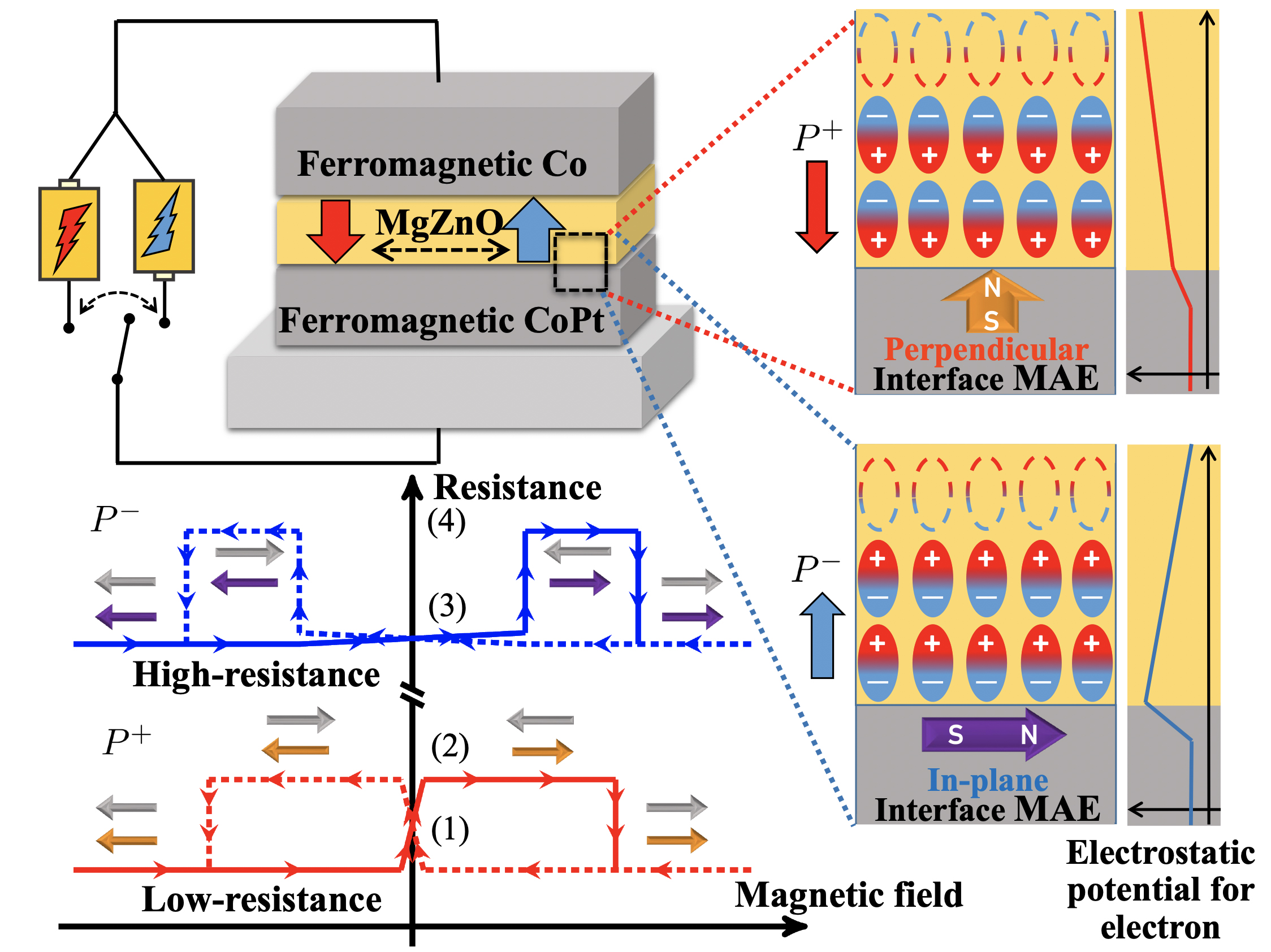Abstract:
Researchers at Kanazawa University controlled the magnetic properties of a metal layer through the electrical polarization of a neighboring metal oxide layer. Computational simulations and experimental measurements revealed that the magnetism of a cobalt-platinum alloying layer strongly depended on the polarization direction of an overlying magnesium zinc oxide layer. The concept of magnetic property control using electrical polarization shows potential to advance the development of nonvolatile magnetic memory.
Kanazawa, Japan—The ability to control the magnetic properties of a material using electricity is important for the development of computer technology, particularly nonvolatile memory, which is memory that requires no constant electrical supply to maintain a set state. That is, electrical control of the magnetic states of a material may allow us to realize the attractive energy-efficient concept of nonvolatile magnetic memory that is switched between different states using electricity. Recently, Japanese researchers from Kanazawa University found that the magnetic properties of one metal layer could be controlled by applying electricity to an overlying metal oxide layer.
The research team investigated the change in the magnetic properties of a layer of cobalt-platinum alloy (CoPt) induced by the electrical polarization of an overlying zinc oxide (ZnO) layer. Computational simulations showed that switching the electrical polarization of the ZnO layer had a large effect on the chemical potential at the interface between ZnO and CoPt, which in turn led to a considerable change in the magnetic behavior of the CoPt layer. The change of the magnetic behavior of the CoPt layer was nonvolatile; i.e., the layer remained in the set state until the electrical polarization of the ZnO layer was changed.
"The large effect of the electrical polarization of ZnO on the magnetic properties of CoPt could be explained by the polarization of ZnO providing control over the interactions of the atomic orbitals of CoPt," says author Masao Obata.
To confirm the promising results obtained from their simulations, the researchers fabricated a stacked structure called a tunnel junction containing Mg doped ZnO and CoPt layers. The magnetic properties and switching behavior of the tunnel junction were investigated. The results revealed that the tunnel junction showed substantially different magnetic behavior depending on the electrical polarization state of the ZnO layer, providing qualitative agreement between the simulation results and theoretical findings.
"The ZnO/CoPt system demonstrates that it is possible to achieve nonvolatile electrical control of the magnetic properties of materials," explains co-author Tatsuki Oda. "Such a concept is important for the development of advanced energy-efficient nonvolatile magnetic memory."
The nonvolatile control of the magnetic behavior of CoPt by the electrical polarization of ZnO represents an attractive concept to realize new nonvolatile memory applications to further advance information processing.

Figure.
A schematic image of magnetic tunnel junction constructed of ferroelectric material sandwiched by magnetic metal layers. Interface of each electric polarization direction are shown enlarged in right-hand side. The diagram of electric resistance caused by electric polarization and magnetic directions are shown in bottom-left side.
Article
Large nonvolatile control of interfacial magnetic anisotropy in CoPt by a ferroelectric ZnO-based tunneling barrier
Journal: Physical Review B
Authors: Muftah Al-Mahdawi, Mohamed Belmoubarik, Masao Obata, Daiki Yoshikawa, Hideyuki Sato, Tomohiro Nozaki, Tatsuki Oda, and Masashi Sahash
DOI: 10.1103/PhysRevB.100.054423
Funder
This work was partially supported by the JSPS Grant No. JP13J05806, the JSPS KAKENHI Grant No. JP18K04923, Kanazawa University SAKIGAKE Project, the Computational Materials Science Initiative, Japan, the Advanced Institute for Computational Science and Information Technology Center of Nagoya University through the High Performance Computing Infrastructure (HPCI) System Research Project under Projects hp17168 and hp180206, and the ImPACT Program of the Council for Science, Technology and Innovation (Cabinet Office, Government of Japan).



 PAGE TOP
PAGE TOP